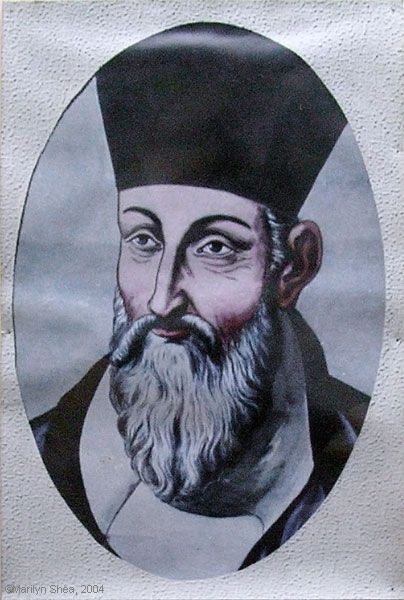 |
| During the later part of the Ming Dynasty (1368 to 1644), Western contacts with China increased. In 1582 Matteo Ricci (1552-1610) was sent by the Jesuits to China and worked there for 27 years.
His first task was to learn Chinese after which he sought out the great scholars of the time. He not only learned from them but introduced discoveries and scientific findings from the West. It was through these contacts that he gained acceptance and would eventually work in Beijing in the court of the emperor. Ricci was born in Italy and entered the Jesuits there. He didn't come from a religious family; in fact, his father forbade the practice within the house. His father tried to remove him forcibly from the seminary at one point but was taken so ill that he concluded that God was tellimg him that his son really belonged in the seminary. Just because you don't believe in religion doesn't mean you aren't superstitious. Ricci was a remarkable man, not only for his brilliance and far-reaching knowledge, but also for his tolerance and ability to understand new ideas. When he studied Chinese classics he saw in Confucianism and Daoism aspects that were consistent with the Bible and Roman Catholicism. He integrated Christian beliefs with traditional Chinese beliefs as had been done in many different cultures through the history of the Catholic Church. His respect for the culture led him to adapt to the culture rather than try to transplant rites and traditions to a new context. It was this adaptation which in future years would lead to a major fight between the Jesuits and other orders of the Catholic priest and the eventual withdrawal of the Jesuits from China by the Pope. Ricci made numerous contributions to Chinese science and astronomy. He collaborated on a translation of the first six books of Euclid's Elements into Chinese and taught it to the court academics. Because mathematics was developed to serve the needs of astronomy, algebra had developed to a high level but formal geometry had not. It was revolutionary but constrained. Only the advanced scholars had access to it. Training for the Imperial examinations continued to be based on the classics. Ricci also brought new knowledge about cartography and taught that the world was a sphere. He produced a world map in 1574 and continued to make revisions until 1603. He extended his mapping to the heavens and made a copper celestial globe with Zhaoqing (肇庆) and taught students and scholars how to make astrolabes, quadrants, and sundials. In 1605, he and Li Zhizao (李之藻, 1565-1630) wrote Qiankun Tiyi (乾坤体义), based on studies of the copper armillary sphere and its coordinate system. He collaborated on several more works in Chinese with scholars of the era. He turned his attention to the complexities of the Chinese calendar and was able to make successful predictions of eclipses. It was due in part to his repeated requests to Rome that future Jesuits sent to China arrived with books and instrumentation to further scientific work. |
http://hua.umf.maine.edu/China/beijing2.html
Last
update: May 2007
© Marilyn Shea, 2007